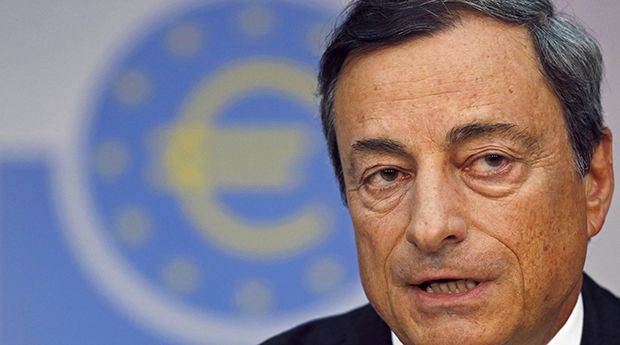Securitisation is being held up as a Holy Grail of SME financing, but it is not going to happen until regulators and central banks talk the same language.
Mario Draghi is a fan of securitisation. At the rates meeting on June 5, the president of the European Central Bank not only cut interest rates, he backed these up with renewed forward guidance on interest rates and a series of measures of credit easing aimed at supporting lending to the non-financial sector.
Securitisation is being heralded as a potential remedy for many ills, specifically as the Holy Grail of SME funding. With a touch of asperity, in the discussion after the rates announcement Draghi said: “We are working on the ABS, but you know there are also other actors that would have to work on this, namely there has to be a re-visitation of the regulation that had been introduced in the past few years about ABS to eliminate some of the undue discriminations towards this specific product.”
What the ECB is trying to do is to drive down the cost of the AAA component of the transaction. If that happens, then the all-in cost of selling the mezzanine and equity tranches becomes much more affordable.
Securitisation is not only one of the more expensive assets, and not just in spread terms, but it is operationally intensive. It is this that makes it significantly less appealing than other forms of funding. This is as true from an investor point of view as it is from an issuer perspective. Securitisation is not an asset class that investors can decide to invest in without expensive infrastructure.
Draghi is right to take aim at other actors, specifically Solvency II, the stringent capital-adequacy rules for insurers that will come into effect in 2015. They are significant, as insurers buy almost a third of securitisation paper.
These new regulations are generally seen as the biggest bete noir for securitisation as they demand so much capital against securitisations that it ceases to be attractive. AAA tranches will have a risk charge of 2.1%, while the tranches below – AA, A and BBB – will have weightings of 3%, 4% and 5% respectively. This is an improvement, almost by half, on the initial proposals, but still challenging.
That aside, scepticism still remains about how the ECB’s support for SME funding via securitisation might work in reality. Fitch has said that the changes will bring “little benefit to the largest and most active European securitisation markets”, while one banker calls Draghi’s plans “well intentioned, but inexcusably naïve”.
Certainly volumes are significantly down in 2014. The first quarter of the year saw €18.5bn of issuance in Europe, according to the Association for Financial Markets in Europe – a decline of 43.6% on the same period in 2013.
“These were post-crisis volumes to begin with. The securitisation market in Europe has become very modest,” said one banker.
Securitisation bankers point to the UK’s Funding for Lending, which was adopted by the Bank of England in 2012 and ended in December 2013. The scheme, which had similar aims, saw bank lending concentrated on mortgages while lending to SMEs continued to decline. Indeed, the FLS saw a collapse in bank issuance across RMBS, covered bonds and senior unsecured debt.
The challenge for the European banking sector at the moment, say bankers, is a lack of balance sheet capacity either as capital or leverage. This does make securitisation a unique tool. While all other forms of issuance provide funding, securitisation is the only one that provides funding, capital and leverage.
“Eventually, I hope that the ECB will get round to saying what it means – that banks should be encouraged to remove assets from balance sheet by securitisation,” said one banker.
To see the digital version of this report, please click here.
To purchase printed copies or a PDF of this report, please email gloria.balbastro@thomsonreuters.com.
